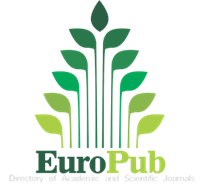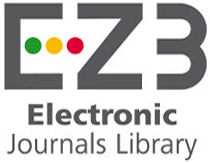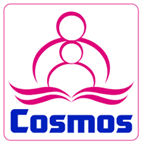Abstract
Background: Chronic exposure to ultraviolet light plays a role in the pathogenesis of melasma. Exposure to excessive sunlight leads to the formation of free radicals. As a result, the body responds by forming antioxidants such as melatonin, which is activated through the melatoninergic antioxidative system to fight oxidative stress. The relationship between melatonin and melasma is yet to be elucidated. This study aims to determine the correlation between melatonin and the severity of melasma.
Methods: This analytical cross-sectional study involved 50 melasma subjects and 10 non-melasma subjects who met the inclusion criteria and were aged between 21-50 years at Prof. I.G.N.G. Ngoerah National General Hospital, Denpasar. The severity of melasma was measured by calculating the melasma area severity index (MASI) score and plasma melatonin levels were assessed using the ELISA method.
Results: The median plasma melatonin level in the melasma subjects was lower (92.48 ng/ml) than in non-melasma subjects (436.35 ng/ml), with a p-value of
Conclusion: Low plasma melatonin levels negatively-correlate with the severity of melasma.
References
- Artzi O, Horovitz T, Barl-lan E, et al. The pathogenesis of melasma and implications for treatment. J Cosmet Dermatol. 2021;20(11):1-4.
- Kwon S, Na JI, Choi JY, Park KC. Melasma: Update and perspectives. Exp Dermatol. 2019;28(6):704-8.
- Rajanala S, Maymone MB, A Vashi NA. Melasma pathogenesis: A review of the latest research, pathological findings, and investigational therapies. Dermatol Online J. 2019;25(10):1-6.
- Liu W, Chen Q, Xia Y. New mechanistic insight of melasma. Clin Cosmet Investig Dermatol. 2023;16:429–42.
- Wiraguna AAGP, Hari ED, Praharsini IGAA. Correlation between gluthatione plasma with degree severity of melasma in Balinese women. Clin Cosmet Investig Dermatol. 2020;13:455-9.
- Sarkar R, Devadasan S, Choubey V, Goswami B. Melatonin and oxidative stress in melasma-an unexplored territory; a prospective study. Int J Dermatol. 2020;59(5):572-5.
- Bocheva G, Slominski RM, Janjetovic Z, et al. Protective role of melatonin and its metabolites in skin aging. Int J Mol Sci. 2022;23(3):1238.
- do Amaral FG, Cipolla-Neto J. A brief review about melatonin, a pineal hormone. Arch Endocrinol Metab. 2018;62(4):472-9.
- Ates H, Firat S, Buhari GK, Keren M, Cigci B, Erkekol FÖ. Relationships between quality of life, sleep problems, and sleep quality in patients with chronic idiopathic urticaria. J Cosmet Dermatol. 2022;21(9):4072-9.
- Slominski AT, Hardeland R, Zmijewski MA, Slominski RM, Reiter RJ, Paus R. Melatonin: A cutaneous perspective on its production, metabolism and functions. J Invest Dermatol. 2018;138(3);490-99.
- Sevilla A, Chéret J, Slominski RM, Slominski AT, Paus R. Revisiting the role of melatonin in human melanocyte physiology: A skin context perspective. J Pineal Res. 2022;72(30):1-39.
- Grimes PE, Ijaz S, Nashawati R, Kwak D. New oral and topical approaches for the treatment of melasma. Int J Womens Dermatol. 2019;5(1):30-6.
- Garg S, Tuknayat A, Hans T. How I manage resistant melasma?. CosmoDerma. 2022;2:1-4.
- Kim NH, Lee AY. Oxidative stress induces skin pigmentation in melasma by inhibiting hedgehog signaling. Antioxidants (Basel). 2023;12(11):1-14.
- Lee AY. Skin pigmentation abnormalities and their possible relationship with skin aging. Int J Mol Sci. 2021;22(7):2-19.
- Rahimi H, Mirnezami M, Yazdabadi A, Hajihashemi A. Evaluation of systemic oxidative stress in patients with melasma. J Cosmet Dermatol. 2024;23(1):284-8.
- Seçkin HY, Kalkan G, Baş Y, et al. Oxidative stress status in patients with melasma. Cutan Ocul Toxicol. 2014;33(3):212-7.
- Choubey V, Sarkar R, Garg V, Kaushik S, Ghunawat S, Sonthalia S. Role of oxidative stress in melasma: A prospecticve study on serum and blood markers of oxidative stress in melasma patients. Int J Dermatol. 2017; 56(9):939-43.
- Speeckaert R, Bulat V, Speeckaert MM, van Geel N. The impact of antioxidants on vitiligo and melasma: A scoping review and meta-analysis. Antioxidants (Basel). 2023;12(12):1-26.
- Skabowiat C, Brozyna AA, Janjetovic Z, et al. Melatonin and its derivates counteract the ultraviolet B radiation-induce damage in human and porcine skin ex vivo. J Pineal Res. 2018;65(2):1-27.
- Wu XM, Antony R, Mayrovitz HN. Melasma: A
condition of Asian skin. Curius. 2021;13(4):1-9. - Rusanova I, Martínez-Ruiz L, Florido J, et al. Protective effects of melatonin on the skin: Future perspectives. Int J Mol Sci. 2019;20(19):1-17.
- Reiter RJ, Tan DX, Rosales-Corral S, Galano A, Zhou XJ, Xu B. Mitochondria: Central organelles for melatonin’s antioxidant and anti-aging actions. Molecules. 2018;23(2):1-25.
- Espósito ACC, Cassiano DP, da Silva CN, et al. Update on melasma-part 1: Pathogenesis. Dermatol Ther (Hiedelb). 2022;12(9):1967-88.
- Bešlić I, Lugović-Mihić L, Vrtarić A, et al. Melatonin in dermatologic allergic diseases and other skin condition: Current trends and reports. Int J Mol Sci. 2023;24(4):1-15.
- Shin JM, Kim MY, Sohn KC, et al. Nrf2 negatively regulates melanogenesis by modulating PI3K/Akt signaling. PLoS One. 2014;9(4):1-7.
- Sun H, Wang X, Chen J, et al. Melatonin treatment improves insulin resistance and pigmentation in obese patients with acanthosis nigricans. Int J Endocrinol. 2018;2018:1–7.
- Janjetovic Z, Jarrett SG, Lee EF, Duprey C, Reiter RJ, Slominski AT. Melatonin and its metabolites protect human melanocytes against UVB-induced damage: Involvement of NRF2-mediated pathways. Sci Rep. 2017;7(1):1-13.
- Cassiano DP, Espósito ACC, da Silva CN. Update on melasma—part II: treatment. Dermatol Ther (Heidelb). 2022;12(9):1989-2012.
- McKesey J, Tovar-Garza A, Pandya AG. Melasma treatment: An evidence-based review. Am J Clin Dermatol. 2020;21(2):173-225.
Recommended Citation
Praharsini, I Gusti Ayu Agung; Khathreen, Corry; Suryawati, Nyoman; Indira, I Gusti Ayu Agung Elis; and Pramita, I Gusti Ayu Sattwika
(2024)
"Low plasma melatonin levels negatively correlate with melasma severity,"
Journal of General - Procedural Dermatology & Venereology Indonesia: Vol. 8:
Iss.
1, Article 3.
DOI: 10.7454/jdvi.v8i1.1186
Available at:
https://scholarhub.ui.ac.id/jdvi/vol8/iss1/3
Included in
Dermatology Commons, Integumentary System Commons, Skin and Connective Tissue Diseases Commons































